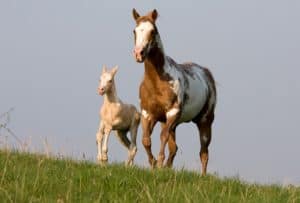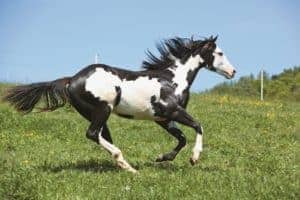
Understanding Equine Genetic Diseases
Research is offering more insight into inherited diseases and conditions in our horses. Learn more about HYPP, PSSM, overo lethal white syndrome, lavender foal syndrome, HERDA, SCID, and more.

Research is offering more insight into inherited diseases and conditions in our horses. Learn more about HYPP, PSSM, overo lethal white syndrome, lavender foal syndrome, HERDA, SCID, and more.

By knowing what conditions certain horses are predisposed to, owners and breeders can take preventive steps.

Equine immunodeficiencies can be challenging to diagnose, and even more difficult–or impossible–to manage.
A newborn Arabian foal is possibly one of the most beguiling creatures on Earth. Elegant of feature and blessed with beauty, he’s full of promise for the future–and often descended of royal blood and worth many thousands of dollars. Imagine how
Genetic testing in horses helps us learn about their physical characteristics, diseases, and much more.
Your three-month-old foal has made it through the birthing process and the vulnerable neonatal period and now seems to be carefree–your little one just has to grow up to fulfill his destiny as a performance
According to information from Gene Check, Inc., an announcement on February 23, 1998, stated that the company has completed development and testing of a test for Severe Combined Immunodeficiency (SCID) in horses. SCID is a genetic disease of
Progress in the field of genetics has been moving by leaps and bounds during the past few years. It wasn’t long ago that researchers discovered ways to unravel and study DNA, that elusive strand of genes that inhabits each and
Stay on top of the most recent Horse Health news with
© 2022 Copyright Statement dolor sit amet, consetetur sadipscing User Terms, sed diam nonumy eirmod tempor invidunt ut labore et dolore magna aliquyam erat, sed diam voluptua. At vero eos et accusam et justo duo dolores et ea rebum. Stet clita kasd gubergren, no sea takimata sanctus est Lorem ipsum dolor sit amet.
"*" indicates required fields